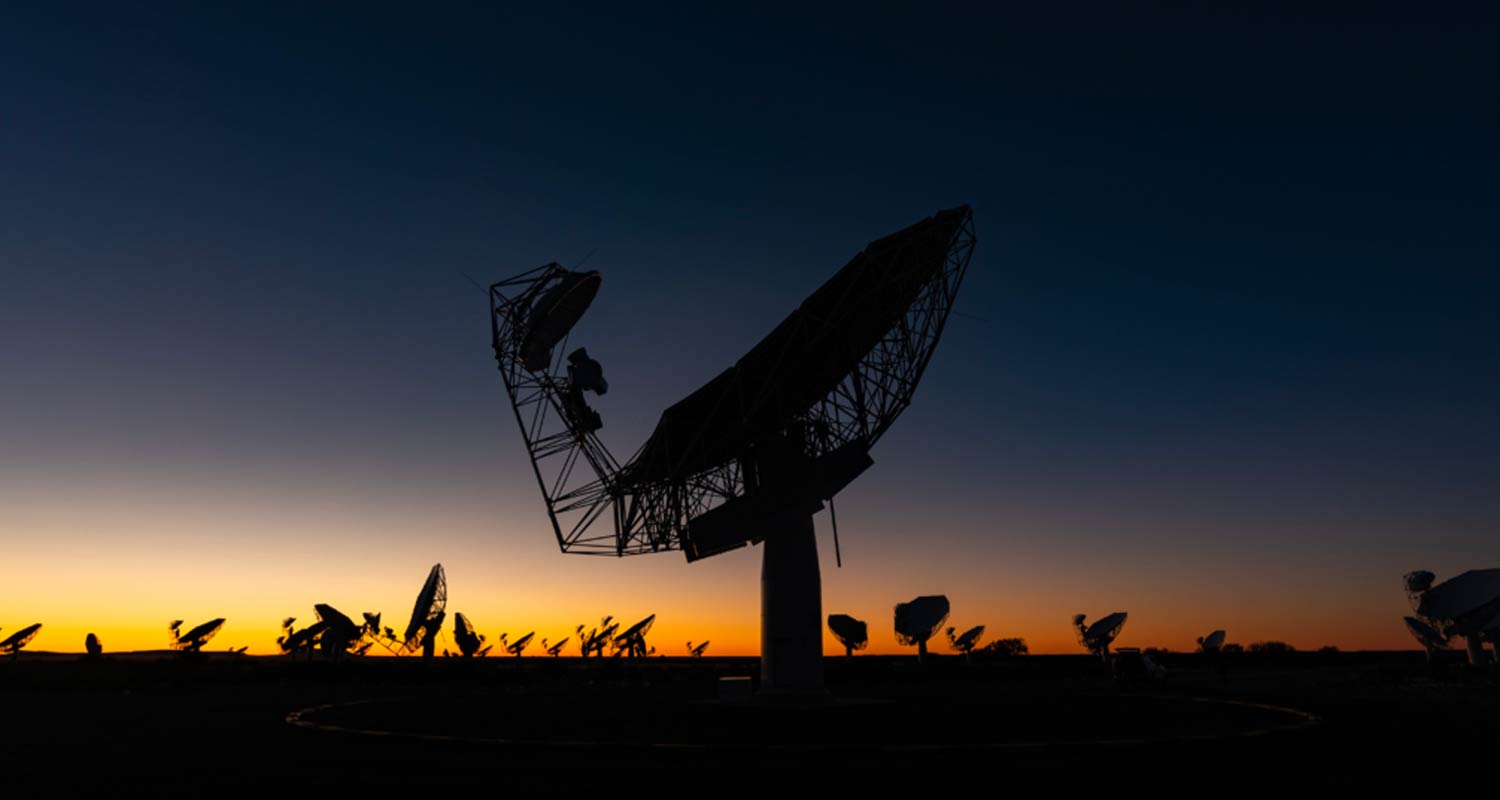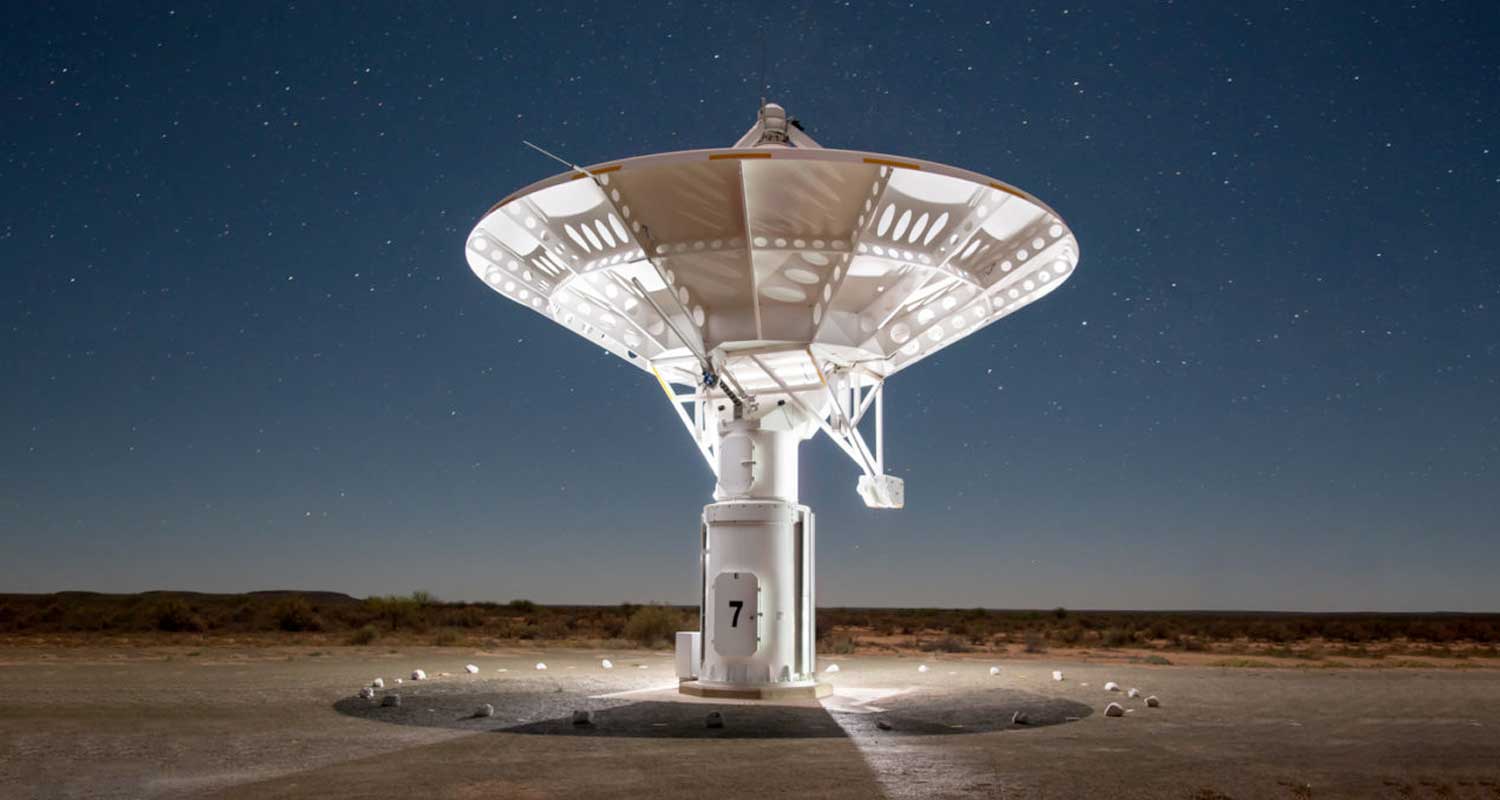
The Karoo is sparsely populated and renowned for its wide-open spaces. In the heart of this landscape, near the small Northern Cape town of Carnarvon, the South African Radio Astronomy Observatory operates a technological marvel that has transformed our understanding of the cosmos. The MeerKAT radio telescope has unlocked cosmic mysteries. It’s fostered scientific collaboration. It is also nurturing local talent.
MeerKAT, which is among South Africa’s largest scientific infrastructure projects of the 30-year period since democracy, has emerged as a beacon of innovation and opportunity on the African continent. It comprises 64 dishes, each 13.5m in diameter, and is a precursor to the Square Kilometre Array (SKA) project. When it’s fully up and running – currently estimated to be in 2028 or 2029 – the SKA will be the world’s most powerful radio telescope.
Over the past five years, MeerKAT has made remarkable contributions to both South African and international science. It possesses a unique combination of exceptional sensitivity and good resolution, enabling astronomers to study the universe in greater detail than ever before.
For instance, its prowess in detecting faint radio signals has led to ground-breaking discoveries in transient astronomy. This branch of astronomy deals with objects that have changing characteristics on relatively short timescales. In 2017, the telescope was involved with follow-up observations of the collision of two neutron stars. Multi-wavelength studies of this nature hold the key to better understanding these highly energetic events. This discovery has deepened our understanding of the universe’s most energetic phenomena.
Here are just four of MeerKAT’s major breakthroughs that I’ve been involved in, and why the findings matter for our understanding of the universe.
Fascinating findings
In one project, MeerKAT was used to observe the centre of our galaxy, the Milky Way. This allowed our team to see, for the first time, magnetic filaments that surround the supermassive black hole at the heart of our galaxy. A supermassive black hole is an extremely dense object with the mass of a million suns. Its gravity is so intense that not even light can escape its pull. The research provided valuable insights into the dynamic processes that shape the galactic environment.
MeerKAT has also spearheaded several galaxy surveys that are reshaping our understanding of cosmic evolution. The Laduma, Mightee and Mhongoose surveys aim to map the distribution of galaxies and neutral hydrogen gas. They’re also designed to study the properties of nearby and distant galaxies. These surveys do more than just expand our knowledge of the universe; they’re also paving the way for future astronomical research.
Read: How astronomers used MeerKAT to uncover ‘Sauron’
One of the most remarkable discoveries to emerge from the Mightee project is the identification of giant radio galaxies – vast structures stretching across millions of light years. These cosmic behemoths, powered by supermassive black holes at their centres, generate intense radio emission. This makes them visible to instruments like MeerKAT, whose unique capabilities have allowed for these impressive galaxies to be found and studied like never before.
 One intriguing discovery made by the Laduma project is the detection of an OH megamaser. This is a cosmic amplifier powered by the intense radiation emitted by galaxies’ active centres. It’s among the most powerful sources of maser emission in the universe, capable of amplifying radio waves by factors of millions. The OH megamaser detected by Laduma is located in a distant galaxy. It offers valuable insights into the dynamics of galactic nuclei and the mechanisms driving their evolution.
One intriguing discovery made by the Laduma project is the detection of an OH megamaser. This is a cosmic amplifier powered by the intense radiation emitted by galaxies’ active centres. It’s among the most powerful sources of maser emission in the universe, capable of amplifying radio waves by factors of millions. The OH megamaser detected by Laduma is located in a distant galaxy. It offers valuable insights into the dynamics of galactic nuclei and the mechanisms driving their evolution.
The Mhongoose survey, meanwhile, has revealed a wealth of information about the distribution and properties of neutral hydrogen gas in nearby galaxies. Mapping the distribution of neutral hydrogen allows astronomers to trace the dynamics of galactic structures and uncover the hidden reservoirs of gas fuelling star formation and galaxy growth. This information is crucial for understanding the complex interplay between gas, stars and dark matter in shaping the evolution of galaxies over cosmic time.
Growth and learning
Beyond its scientific impact, MeerKAT has become a driving force for human capital development in African astronomy.
Members of local communities around the site have been employed during both the construction and operation stages. Engagements with those communities, and particularly with schools in the area, are breaking down barriers to participation in astronomy. This creates much-needed pathways for underrepresented groups to enter the field.
Through training programmes and educational initiatives, MeerKAT is nurturing a new generation of African scientists and engineers, empowering them to pursue careers in science, technology, maths and engineering fields so they can contribute to the global scientific community.
The project serves as a hub for international collaboration. It’s attracted researchers from around the world to South Africa
And, thanks to initiatives like the African Very Long Baseline Interferometry Network, MeerKAT is building capacity in radio astronomy across the continent and positioning Africa as a leader in the field.
Given the many ground-breaking discoveries MeerKAT has already made, it promises to continue serving as a discovery machine that will push the boundaries of astronomical exploration into the SKA era.![]()
- The author, Ed Elson, is associate professor of astronomy, University of the Western Cape
- This article is republished from The Conversation under a Creative Commons licence

